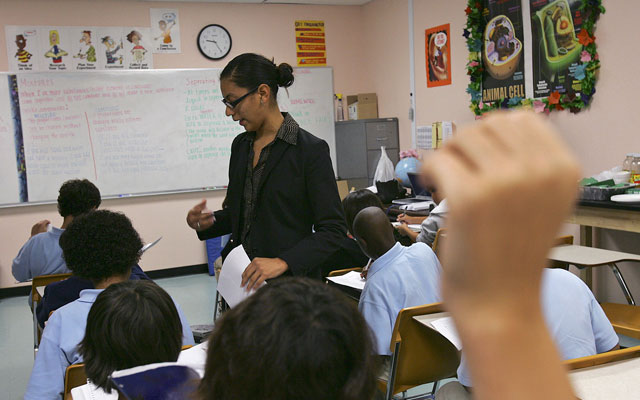The Lone Star State is considering significantly expanding educational choice options for children.
Under consideration: an elimination of the cap on charter schools (only 215 are currently allowed to operate), creation of special needs scholarships to allow children with disabilities to attend private schools of choice, and a tuition tax credit program that would provide tax credits to businesses that donate to nonprofits that provide vouchers to low-income children to attend private schools.
Randan Swindler, director of external affairs for the American Federation for Children, notes that education reform is at the top of the priority list for Texas policymakers. As she said in personal correspondence:
With over 100,000 students on the charter school wait list, a proposal to remove the cap on the number of charters allowed in the state will open doors for more parents to send their children to innovative charter schools. Legislators from both parties are showing an interest in improving education in the Lone Star State. As things continue to heat up in the legislative session, lawmakers must remain focused on putting the interest of children ahead of the interest of the education establishment.
Along with expanding access to charter schools, providing choice for special needs children through a scholarship option ensures that parents have the opportunity to choose schools that better serve their children’s unique learning challenges. Education researcher Matthew Ladner, writing for the Texas Public Policy Foundation, points to a survey of parents with children in Florida’s McKay program, which provides scholarships to special needs children:
A survey of McKay Scholarship parents revealed strong rates of satisfaction with services provided in comparison to previous public schools. The survey found that 92.7% of current McKay participants are satisfied or very satisfied with their McKay schools while 32.7% were similarly satisfied with their public schools.
Educational choice also holds the potential to reduce achievement gaps between white and minority students and between low-income students and their more affluent peers. In Texas, where more than half of all public school students are Hispanic, choice is a critical step in narrowing concerning achievement gaps. For example, while 42 percent of white eighth graders are proficient in reading, just 17 percent of their Hispanic peers can read on grade level. According to the National Assessment of Educational Progress, Hispanic eighth graders are two years behind their white peers in reading.
That can—and should—change. Educational choice provides the catalyst for the type of improvement the Texas educational system desperately needs. Across the country, school choice options are proliferating. There’s no reason they shouldn’t in Texas as well.
